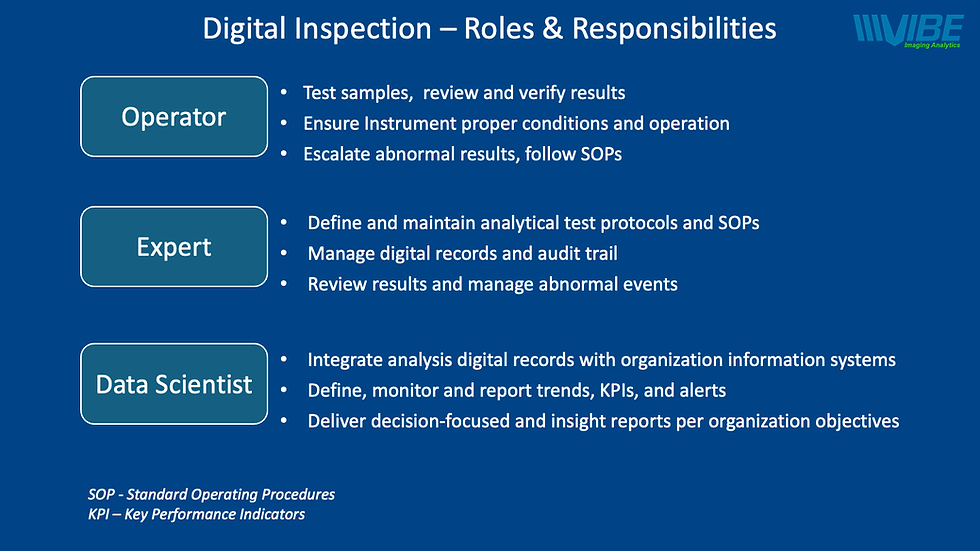40+ Universities & Research Organizations Used Vibe in Publications
- "The Grain Guru"
- Sep 6, 2025
- 3 min read

Every now and then, during quieter moments, I enjoy searching the web for new information about Vibe. We add these findings to our Knowledge Library so we can share data and references with our customers and ecosystem.
Today, thanks to ChatGPT, I asked it to scan our site and pull the names of universities and research organizations that have used Vibe in their published work. I was pleasantly surprised: many of these are global, joint or collaborative projects relying on Vibe analysis results and datasets.
One recent example is in Canada, where Limagrain Cereals Canada Research, supported by Saskatchewan Pulse Growers (SPG), is using the Vibe QM3i to digitize pea quality assessment and standardize greenness/bleaching levels.
None of this came from big PR campaigns or flashy events. It’s from our dedicated team, working with our customers, steadily evolving Vibe, exploring new use cases, and crafting standard operating procedures that bring real value.
We love what we do. We work hard, with the mindset to provide an excellent product and services — all under our Vision-of-Things® for better and safer food.
Universities & Research Organizations That Used Vibe in Publications (A–Z)
Bangladesh Agricultural University – Department of Agribusiness and Marketing, Mymensingh, Bangladesh
Bioversity International, Cali, Colombia
Clemson University – Department of Plant and Environmental Sciences, Florence, SC, USA
Colorado State University
Fondo Latinoamericano para Arroz de Riego (FLAR), Cali, Colombia
Fujian Agriculture and Forestry University – Haixia Institute of Science and Technology, Basic Forestry and Proteomics Research Center, China
Gregor Mendel Institute, Austrian Academy of Sciences / Vienna BioCenter, Austria
Humboldt University of Berlin – Environmental Policy and Sociology
ICAR – Indian Institute of Rice Research, Hyderabad, India
International Crops Research Institute for the Semi-Arid Tropics (ICRISAT), Hyderabad, India
International Maize and Wheat Improvement Center (CIMMYT), Texcoco, Mexico
International Rice Research Institute (IRRI), South Asia Hub, ICRISAT, Hyderabad, India
International Rice Research Institute, South Asia Regional Centre, Varanasi, India
Lantmännen Lantbruk, Svalöv, Sweden
Limagrain Cereals Canada Research – supported by Saskatchewan Pulse Growers (SPG)
Louisiana State University (LSU)
Michigan State University – Department of Plant, Soil and Microbial Sciences, East Lansing, MI, USA
Migal – Galilee Technology Center, Kiryat Shmona, Israel
North Carolina State University – Department of Crop and Soil Sciences; Department of Animal Science, Raleigh, NC, USA
North Dakota State University, ND, USA
Rice Research and Extension Center, University of Arkansas
Shanghai Academy of Agricultural Sciences – Crop Breeding and Cultivation Research Institute
ShanghaiTech University – Shanghai Institute for Advanced Immunochemical Studies, China
South Dakota State University, Brookings, SD, USA
Swedish University of Agricultural Sciences – Department of Plant Breeding, Lomma, Sweden
Tel-Aviv University – Institute for Cereal Crops Improvement, Israel
Texas A&M University – Department of Agricultural Economics, College Station, TX, USA
University of Arkansas – Department of Food Science; Rice Research and Extension Center
University of California, Davis (UC Davis) – Rice Mutants Identification Project
University of Georgia – Department of Crop and Soil Sciences, Athens, GA, USA
University of Haifa – Institute of Evolution, Israel
University of Maryland – Department of Plant Science and Landscape Architecture, College Park, MD, USA
University of Minnesota, St. Paul / Crookston, MN, USA
Versuchs- und Lehranstalt für Brauerei in Berlin (VLB) e.V., Germany
Wageningen University and Research – Division of Human Nutrition and Health, Netherlands
Washington State University – School of Food Science, Pullman, WA, USA
Weizmann Institute of Science – Department of Plant and Environmental Sciences, Israel
Virginia Polytechnic Institute and State University (Virginia Tech)
USDA-ARS Units:
USDA-ARS Cereal Crops Research Unit, Fargo, ND, USA
USDA-ARS Cereal Disease Laboratory, St. Paul, MN, USA
USDA-ARS Grain Legume Genetics and Physiology Research Unit, Pullman, WA, USA
USDA-ARS SEA – Plant Science Research Unit, Raleigh, NC, USA
USDA-ARS Western Wheat and Pulse Quality Laboratory, Pullman, WA, USA
USDA-ARS Western Wheat Quality Lab, Pullman, WA, USA
USDA-ARS Western Wheat Quality Laboratory, Pullman, WA, USA
USDA Agricultural Research Service – Dale Bumpers National Rice Research Center
Please feel free to contact me if you have question or interested to brainstorm seed analysis !




Comments